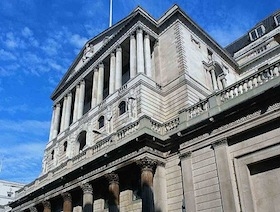The Bank of England will resist raising interest rates until at least midway through 2016, experts say, despite the US Fed rise of 0.25%.
Commentators have been keeping a close eye on events in America for some while, expecting that change across the Atlantic would spark a reaction in the UK.
Yesterday’s US Fed hike was the first one in nine years.
The Bank of England has left its Bank Rate unchanged at 0.5% for nearly seven years.
But Nick Dixon, investment director at Aegon UK, said: “Those expecting a domino effect this side of the pond will be left disappointed, with no-flation likely to delay the Bank of England’s first move until the second half of 2016.”
He said: “The rate hike was expected and confirms a strongly recovering US economy. It is a pre-emptive strike to mitigate emerging inflationary pressure and limit future rate increases. Markets had already priced in gently rising rates over the next few years of which this is the first move.”
Ben Brettell, senior economist, Hargreaves Lansdown said: “The Fed’s move it makes life easier for Carney to push the red button on UK rates.
“Where the Federal Reserve leads, the Bank of England could follow, but not just yet. The Fed cut rates to near zero in December 2008, and the Bank of England cut to the current 0.5% three months later in March 2009. As such today’s hike from the Fed opens the door for the Bank of England to make its first move next year.
“However inflation has been basically stuck at zero since February, wage growth has come off somewhat and productivity remains a puzzle. Against this backdrop borrowers will dine out for at least the first half of 2016 without a cost rise, where as savers will remain decidedly in the doldrums.
“According to its own projections released in September, the Fed expects interest rates to be 1.4% by the end of next year and 2.6% by the end of 2017.”
Earlier this month Steve Gowler, chief executive of RCI Bank, said his company’s forecasts indicated no rise until the start of 2017, increasing to a steady state of 2% by the end of 2018.
David Page, senior economist at AXA Investment Managers, said: “The Fed also announced a modification of its balance sheet policy suggesting that it would not stop or taper reinvestment of maturing Quantitative Easing (QE) assets until normalisation was ‘well under way’ (previously it had simply said this would start after lift-off). This was a clarification that we had long anticipated and echoed a similar recent statement by the Bank of England. Other market commentators had expected some cessation of reinvestment from mid-2016.”

